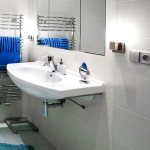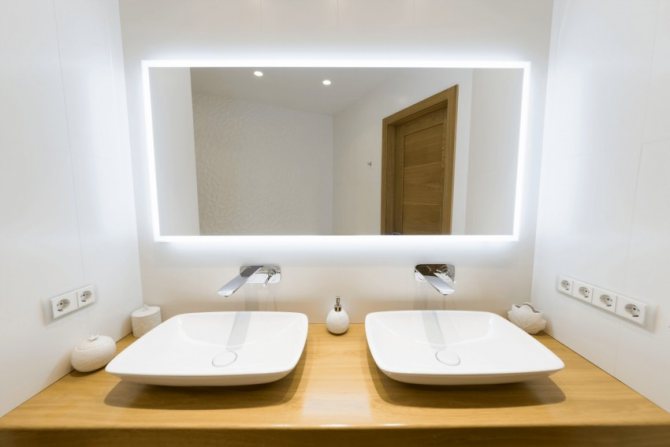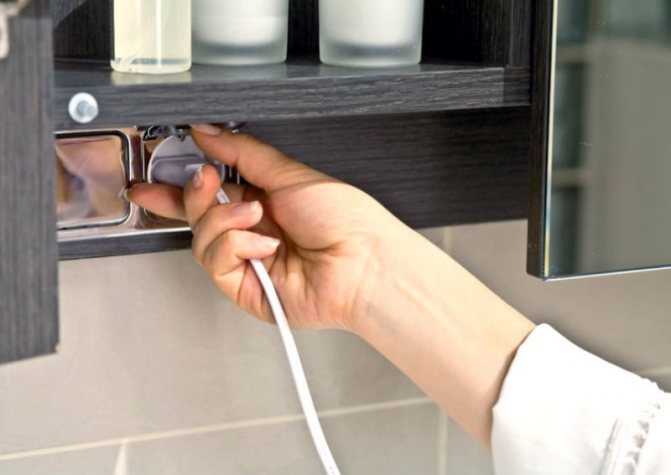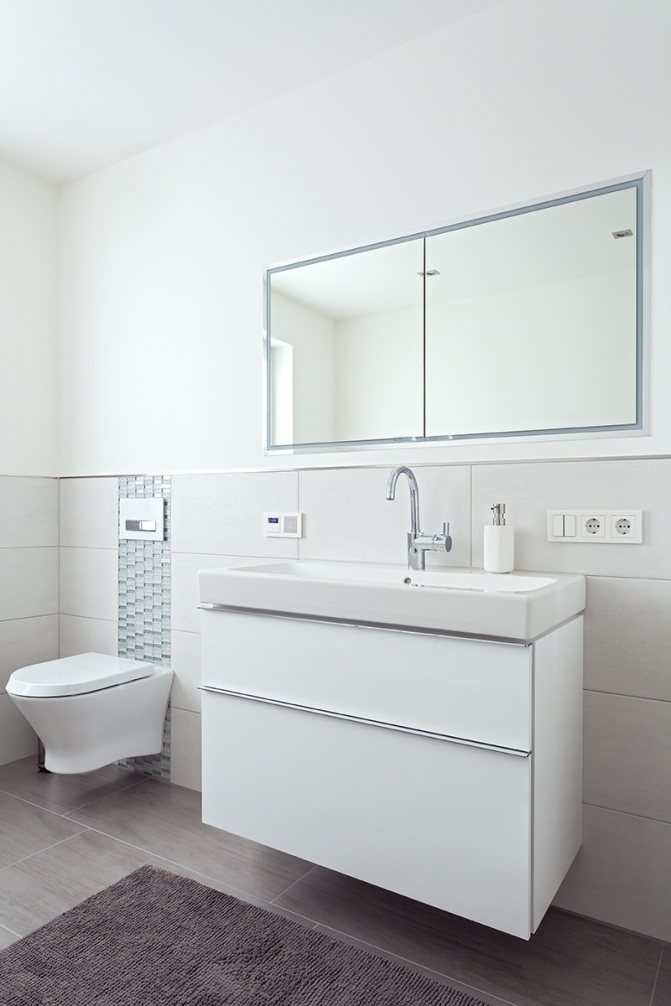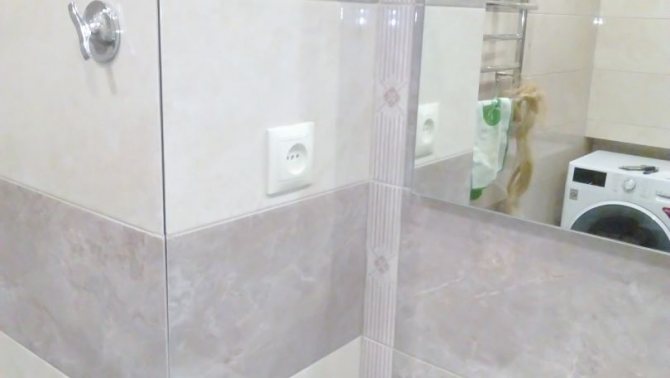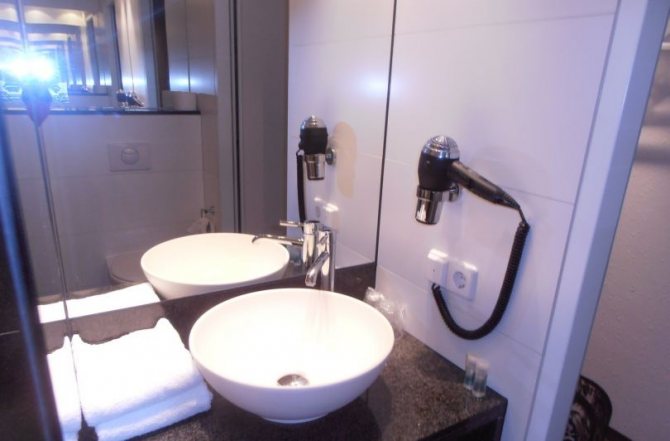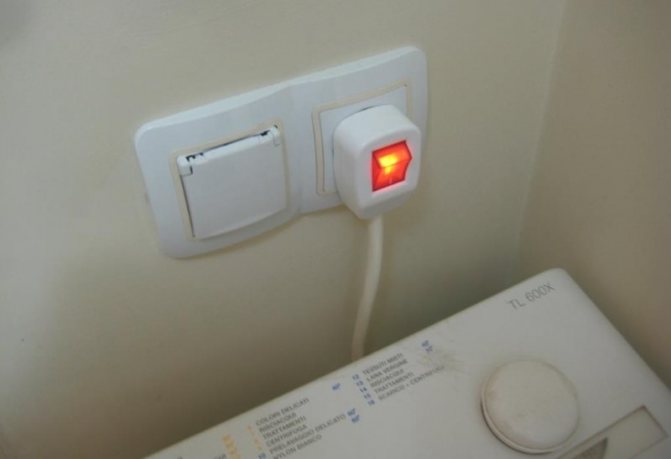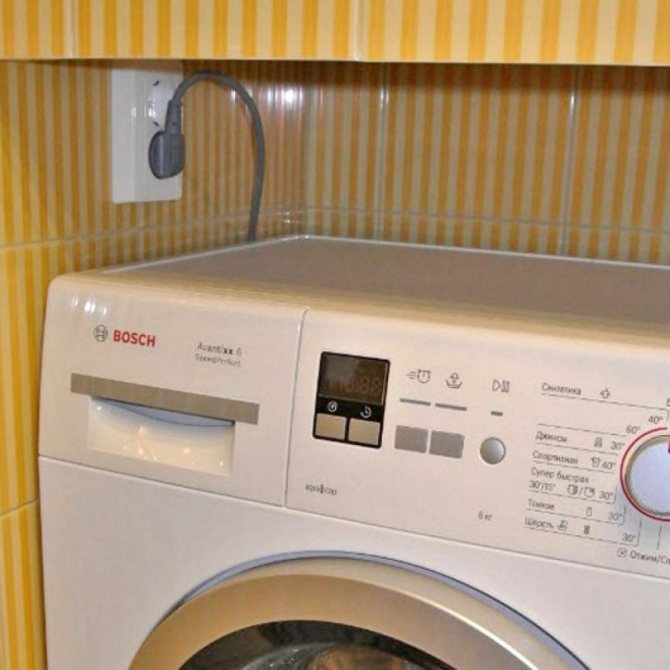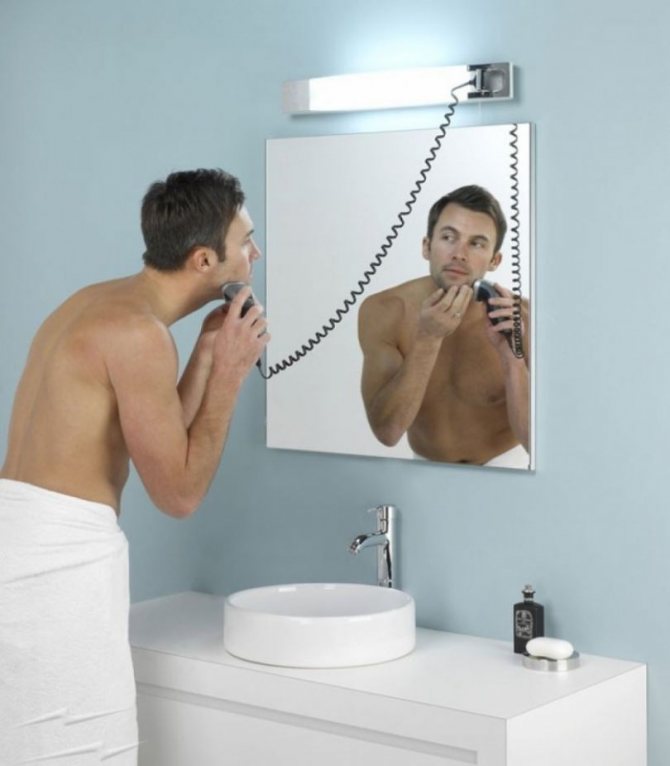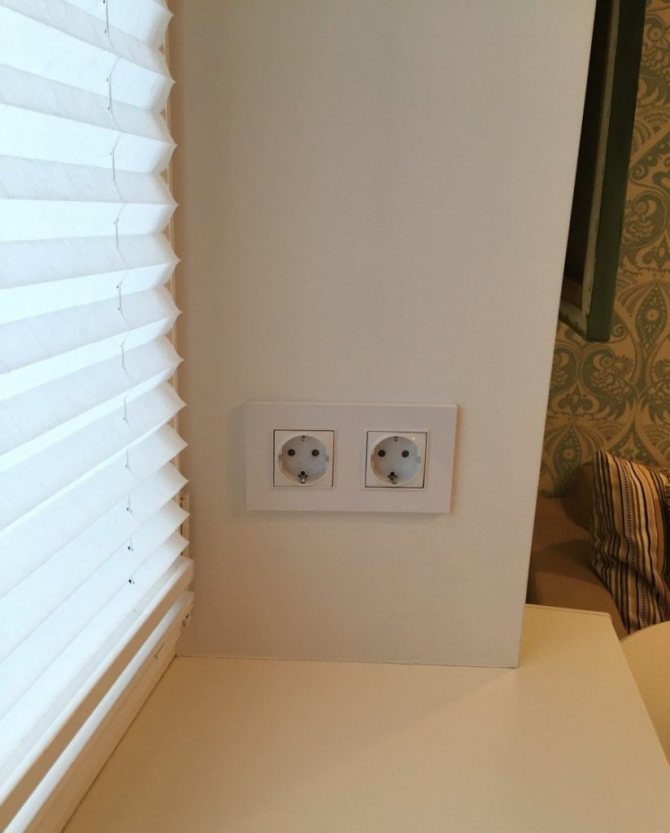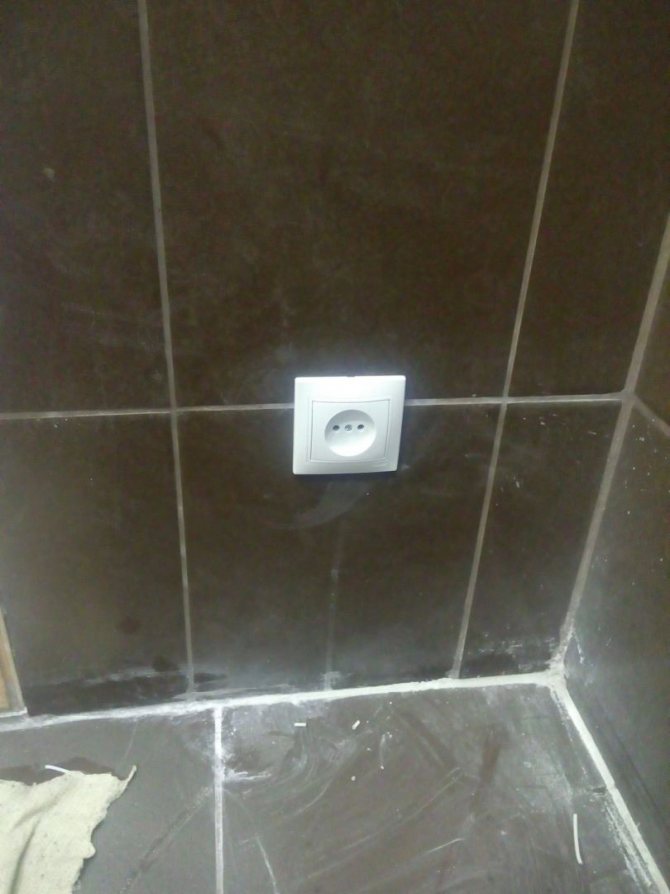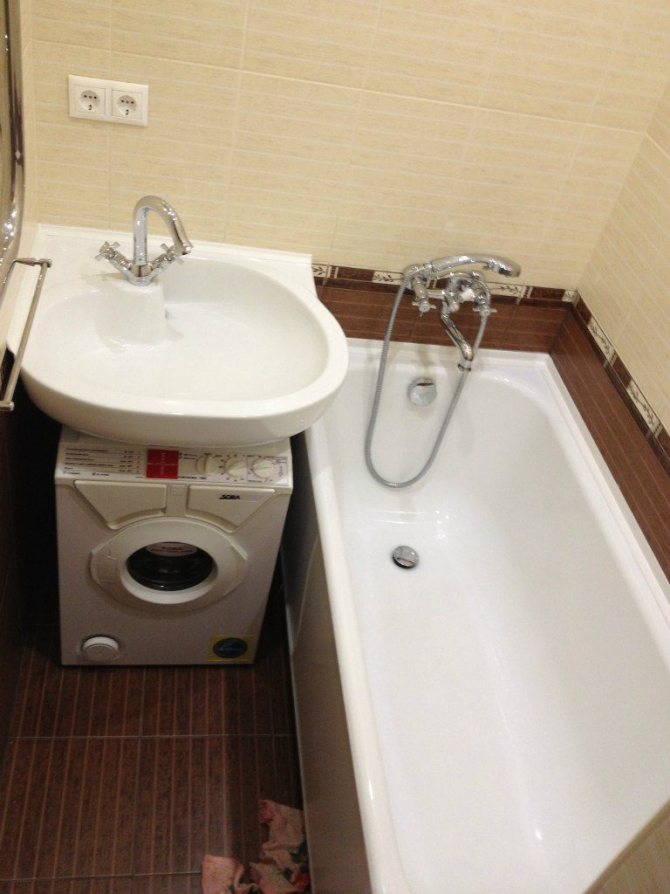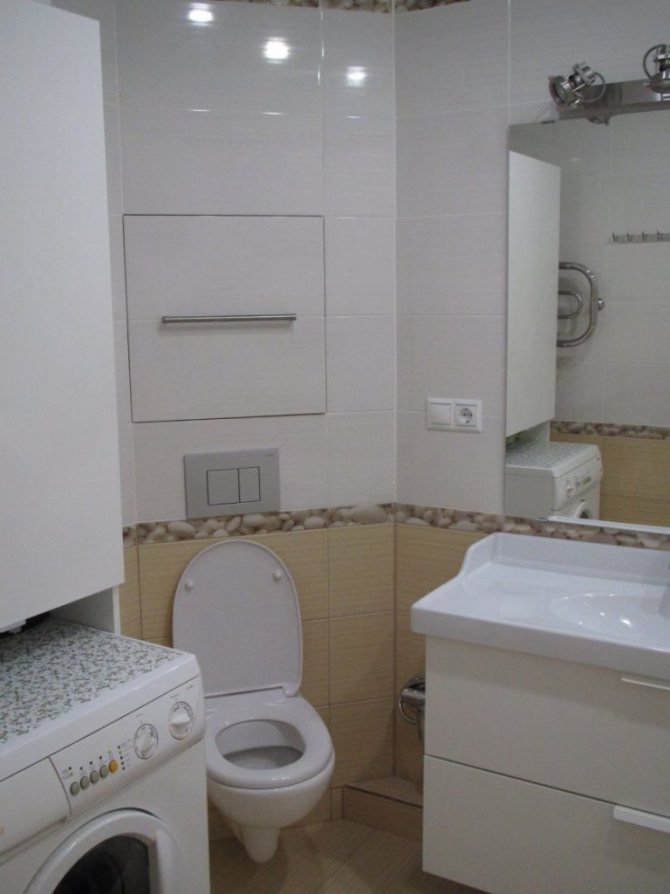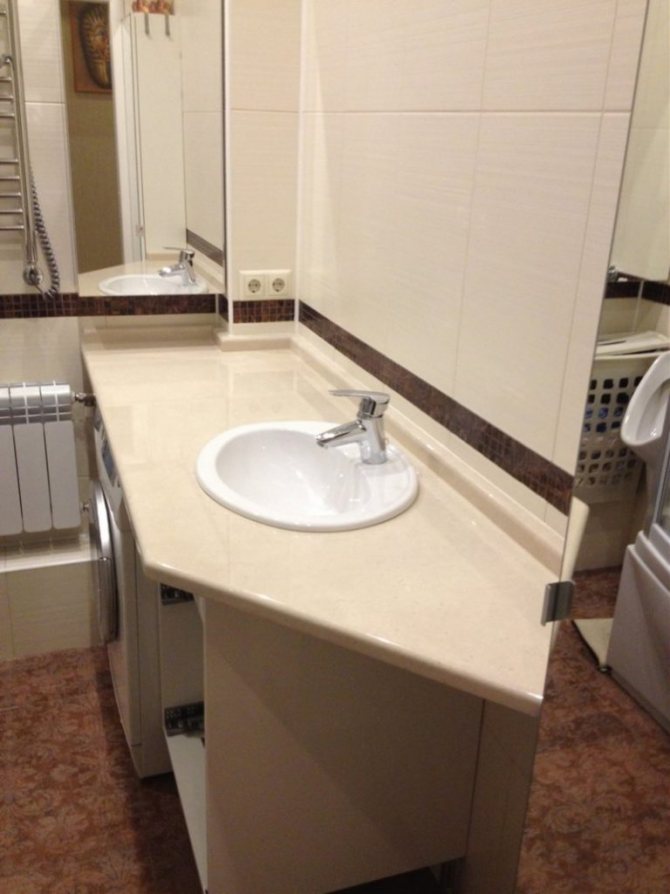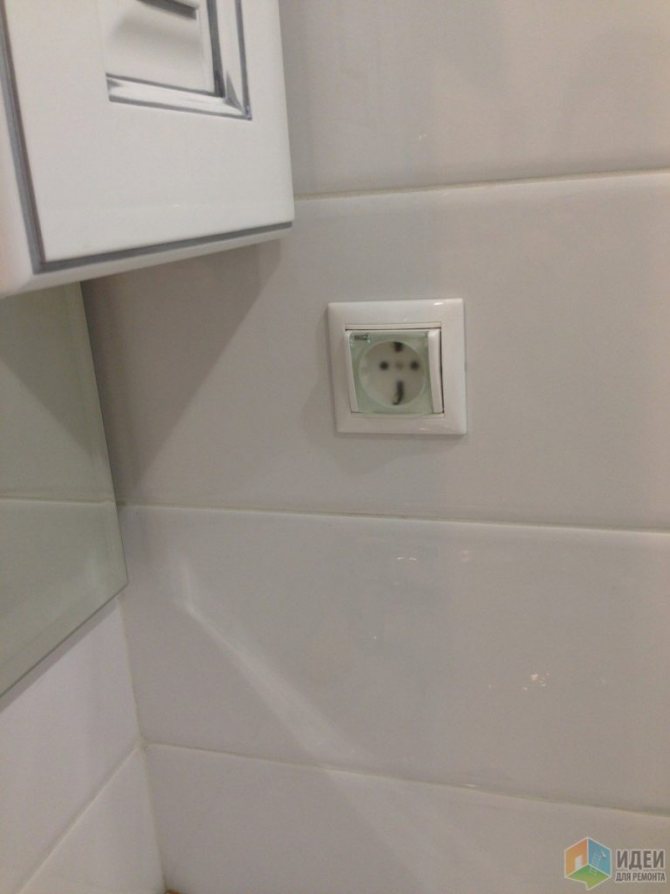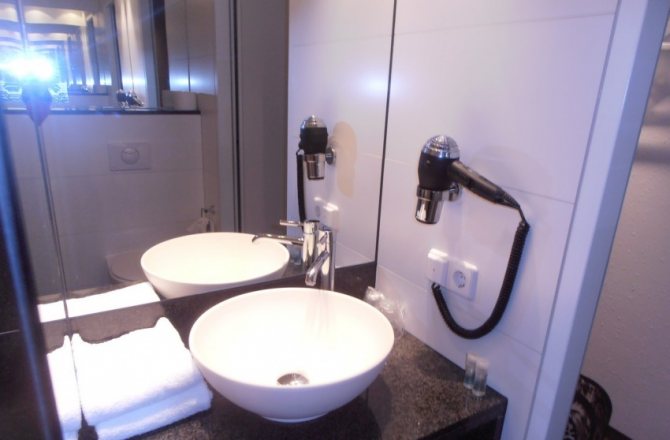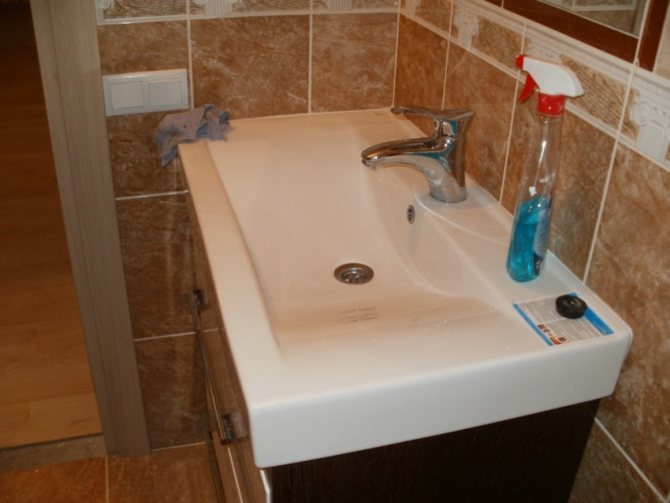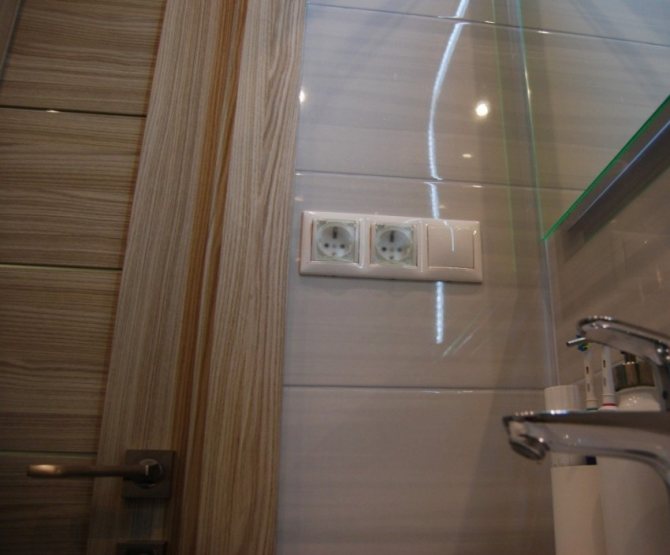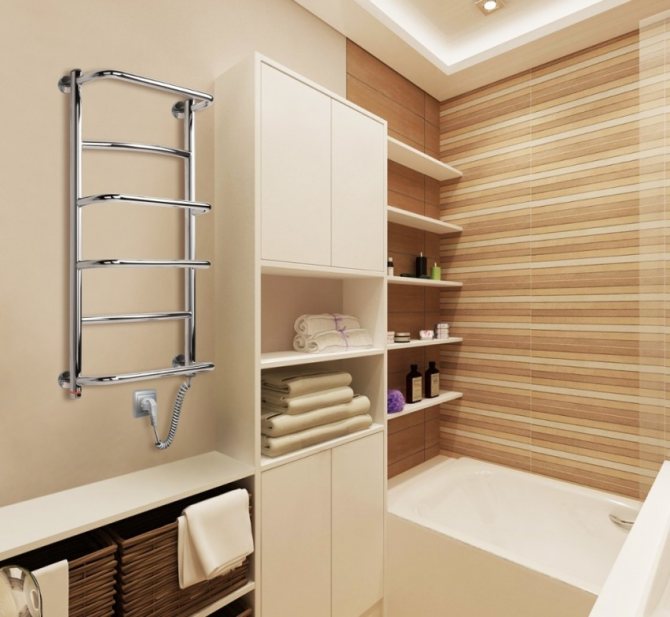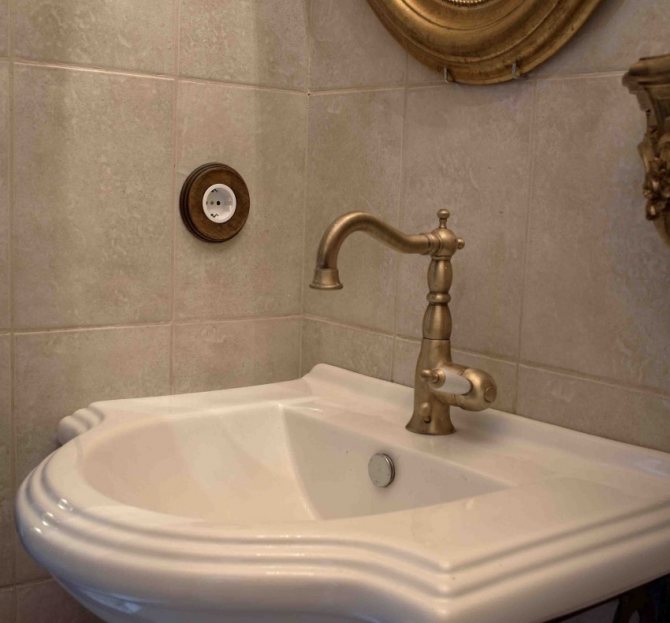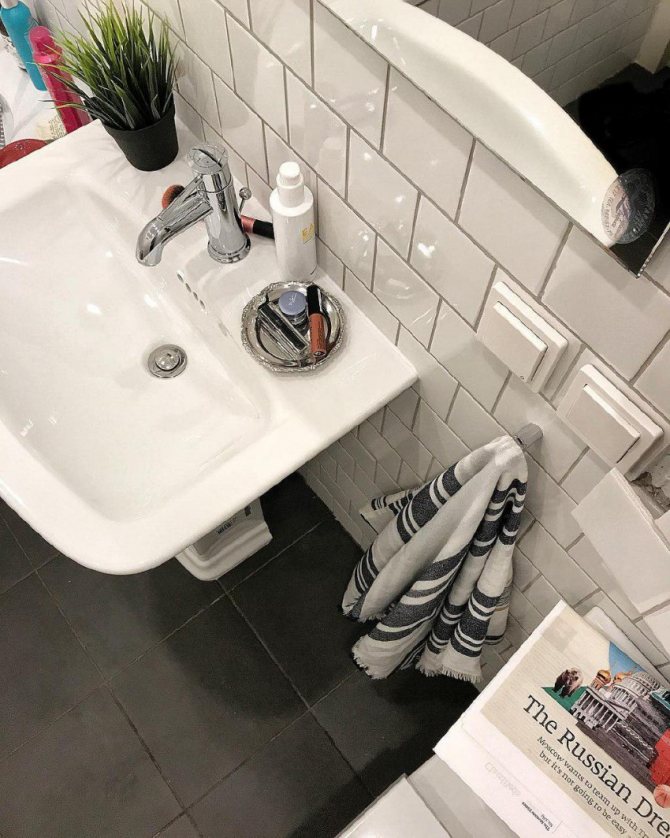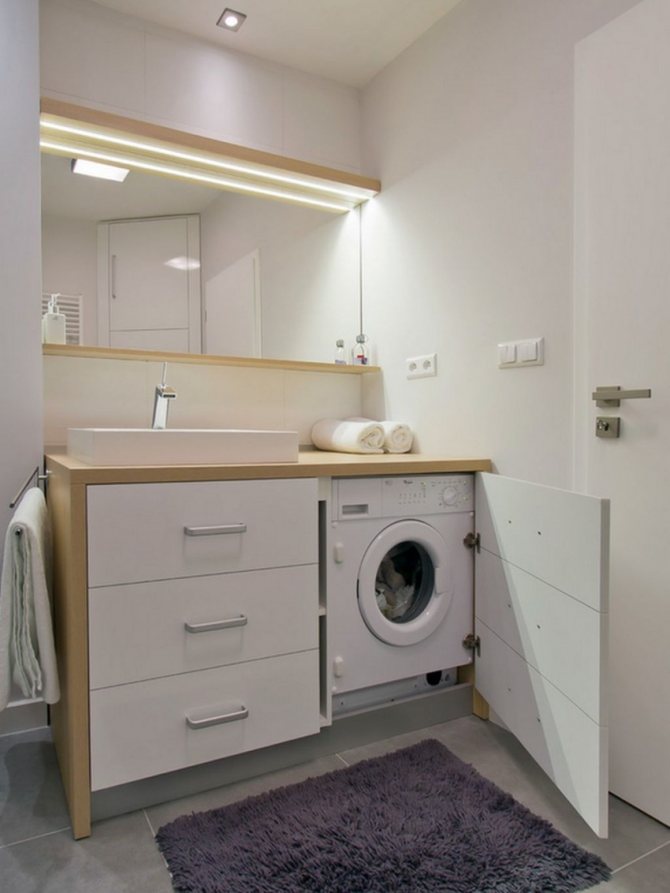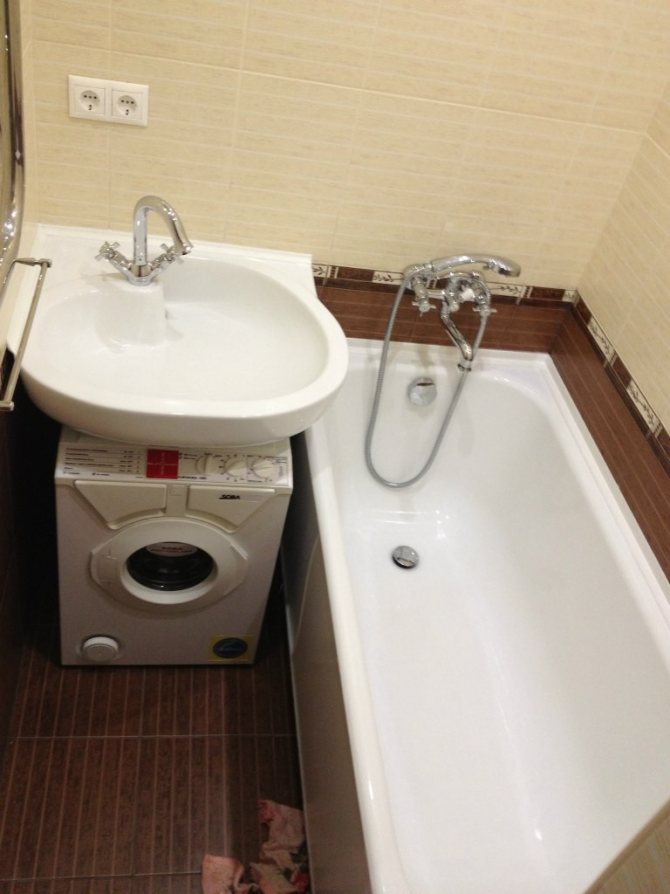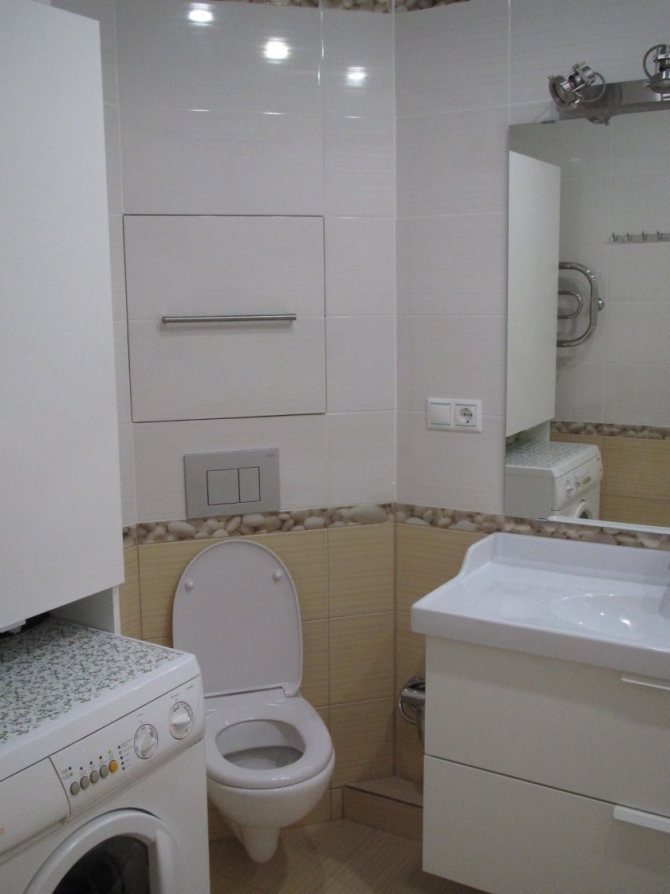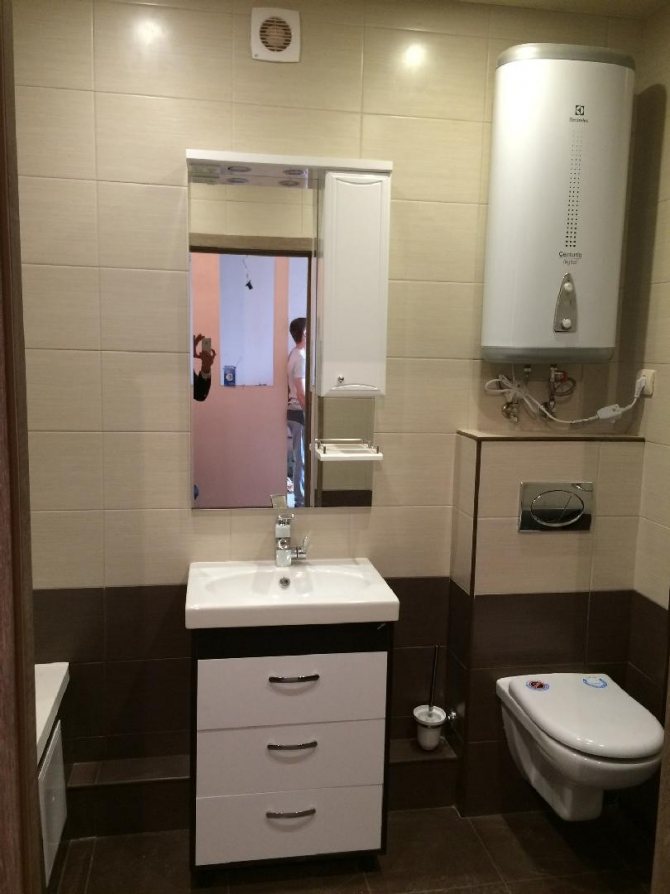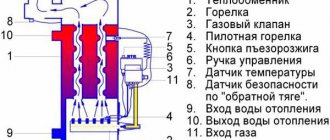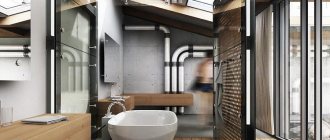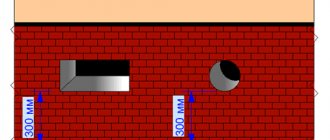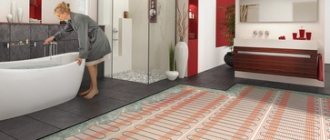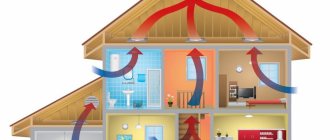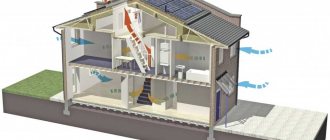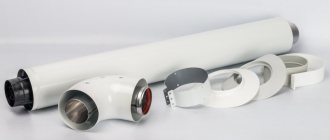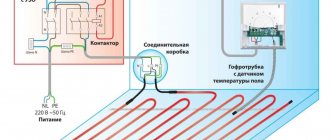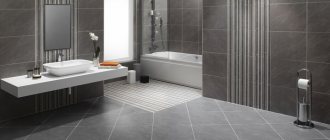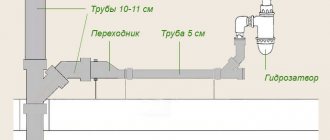Is it possible to install a socket in the bathroom
In buildings built in Soviet times, it was almost not provided for the installation of sockets in the bathrooms. The main reason was weak wiring, small area of premises, lack of electrical appliances requiring connection. All available means of switching - sockets and switches - were installed outside, not far from the door.
Such a connection scheme created certain inconveniences, since all electrical appliances had to be connected from the outside, and the door to the bathroom did not close at the same time. Many owners were forced to use extension cords, which is strictly prohibited by the requirements and provisions of the PUE.
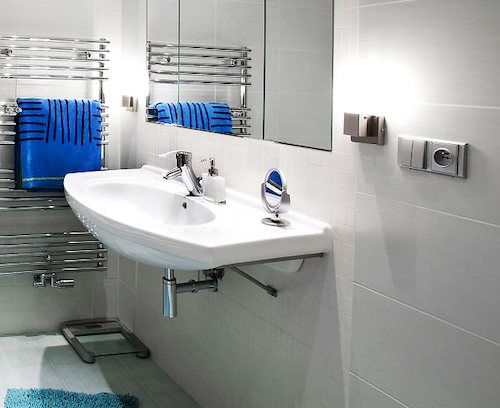
Modern apartments are distinguished by large areas for furniture, a bathroom, especially where the bathroom is combined with a toilet. An additional internal space has appeared, where, in addition to small household appliances, it is possible to place powerful equipment - washing machines, a boiler, heated towel rails and other types of electrical installations. Many rooms are equipped with underfloor heating systems that require a separate connection.
Before installing sockets in the bathroom, you should determine their exact number, in accordance with the planned connection of consumers. Among them, a division should be made into equipment that is permanently connected to the network and devices that are used only occasionally. Devices that are permanently connected to the network can be connected not to the outlet, but through the terminal block directly to the home electrical panel.
Provide outlets in the sink area
How many sockets and switches do you need? At least 1 outlet to connect a hairdryer, electric toothbrush or razor. And 1 switch - for illumination above the mirror.
Where to locate? Not far from the sink.
At what altitude? Height from the floor - at least 60 cm. The nearest source of water should be at the same distance.
INMYROOM tip: your bathroom needs waterproof sockets. For example, the new Unica New collection, Schneider Electric, has built-in shutters that automatically lower when the plug is removed. They prevent water, foreign objects from entering the outlet and protect children from electric shock
How many sockets do you need? 1 outlet if you are installing a bath or shower with hydromassage.
Where to locate? Next to a bath or shower connection.
At what altitude? Do not locate outlets lower than the water supply lines. The optimum height is 110–115 cm from a clean floor.
According to the documentation, the bathroom is divided into four security zones. Zero is a zone located in direct proximity to plumbing fixtures. The first zone is above and below the previous zone. The second is located half a meter further than the first zone, and the third is another 2.4 meters and further from the previous one.
According to the recommendations, the installation of sockets is allowed only in the third zone!
Division of the room into separate zones
When choosing an installation site, it is necessary to follow the rules and be guided by the PUE, while all distances must be observed, including the installation height of the sockets. It is recommended to arrange the sockets so that in the event of a breakdown, they are easily accessible for replacement or repair. In order to avoid violations of the installation rules, the entire bathroom is conditionally divided into several zones.
According to regulatory documents, the entire territory of the bathroom is conditionally divided into several zones.They determine the degree of safety and allow you to most optimally develop a plan for the placement of electrical appliances and equipment, to lay the wiring to each point in the shortest possible way.
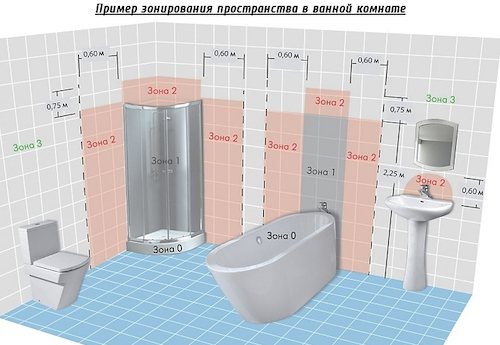

The conditional division of the bathroom includes the following zones:
- Zone 0. Grips the inside of the shower tray and the inside of the bath. It is impossible to place any waterproof electrical equipment in this place.
- Zone 1. Located directly above the shower tray, bathtub, washbasin or sink, at a height of 2.5 m from the floor.
- Zone 2. Located up to 60 cm in all directions horizontally from cabinets, shower tray, bathtub or sink. The height from the floor is up to 2.25 m. It covers the area above the 1st zone at a height of 3 m from the floor.
- Zone 3. Overlaps the 2nd zone by 2.4 m, keeping the height from the floor 2.25 m. The height above the 2nd zone is up to 3 m. Based on these parameters, the height of the sockets in the bathroom is also determined.
Where else is installation allowed
There are a few curious additions to the rules about zones in which you can or cannot place outlets. Each of them does not go all the way to the ceiling - the height of any of them is 2.25 meters. This means that if the ceiling height is 2.5 meters, then the location of the sockets in the bathroom may even be above zone 1, but at a height of 2.3 meters. Thus, the requirement to locate the wiring 15 cm from the ceiling is additionally met.
This seemingly ridiculous rule allows you to "get out" of the situation and do everything according to the PUE when the room is small, and sockets are needed for stationary devices - the same boiler and washing machine.
Where is it allowed to install the sockets
After the bathroom is conditionally divided into several zones, you can calculate how many sockets there should be and choose a place for placing sockets for electrical equipment. At the same time, the norms and rules established for each site should be observed.
The zero zone, as already noted, is not intended for the installation of any devices. The only exceptions are devices used directly in the bath. They operate on a voltage of no higher than 12 V, and the supplying step-down transformers are placed outside the boundaries of this section.
In the first zone, you can install a shower and an instant heating water heater. Also, it is allowed to install an individual electric shower equipped with a pump with high-quality waterproofing. Here are the wires connecting these devices.
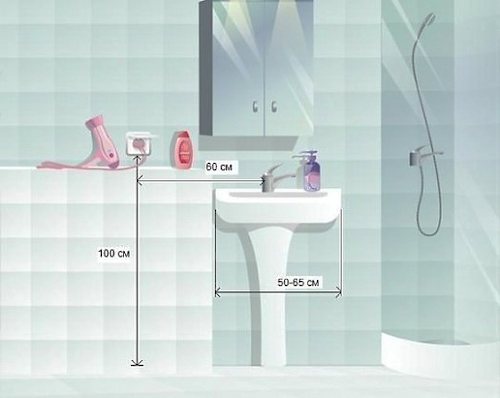

In zone 2, the location of all devices permitted in zone 1 is allowed. On the same site, lighting and water heaters with a protection class of at least 2, equipped with basic and additional insulation, are installed. It is prohibited to install junction boxes and controls in all of the zones listed, from 0 to 2.
The third zone is considered the most remote from dangerous places. Firstly, they must be connected via an RCD with a trip current of up to 30 mA. In the case of using a group line, the pickup current is set to 10 mA. The second condition or option is to connect the sockets using an isolation transformer, but in practice this method is very rarely used. The distance from the outlet to the pipeline must be at least 50 cm, and from the doors of the shower stall - 60 cm or more.
Preparation for work taking into account all requirements
Installing an electrical outlet for a washing machine in a small bathroom is not the most trivial task, especially for miniature bathrooms in old multi-apartment Khrushchev and Brezhnev houses. The complexity of its solution is caused by the need to link the solutions of a whole complex of tasks into a single whole:
- the power supply line of the washing machine must be separate;
- the location of the outlet must be in the appropriate electrical safety zone (second or third);
- the location of the outlet should be convenient for operation and easily accessible for operational maintenance;
- in the case of a two-wire wiring line in the bathroom, it must be technically possible to connect the socket to the ground loop;
- compliance of the technical and design characteristics of the socket with the corresponding characteristics of the washing machine.
At first glance, all these tasks seem to be easily solved and even far-fetched somewhere. But on a second, professional look, everything is far from so simple.
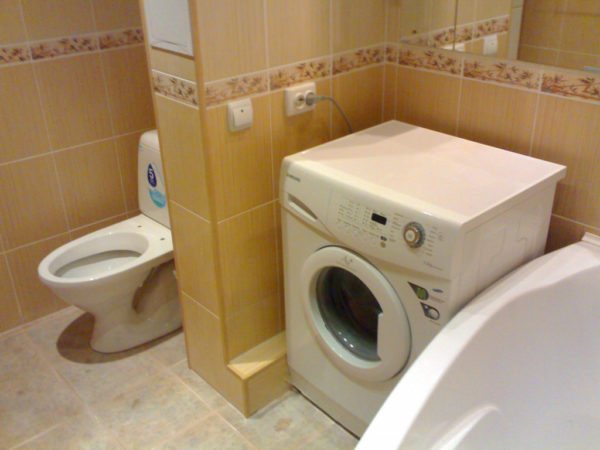

Not the worst option for placing a washing machine and an outlet for it in the bathroom.
Feed line
The power line ending with a socket for the washing machine must be separate - this is a requirement of the PUE and common sense: in the water heating mode, even a super-economical automatic washing machine can consume about 2.5 kW of electrical power. The appetites of low-budget models of obscure production can exceed 3.5 kW (moreover, with 2000 watts specified in the data sheet)!
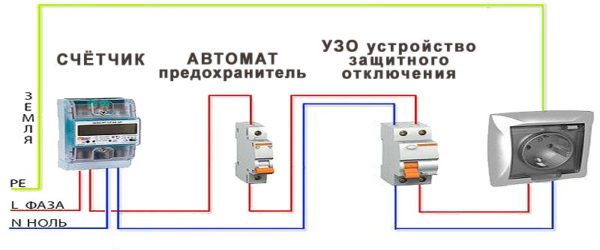

Connection diagram of the washing machine to the power supply network.
In addition to power consumption, another factor is important - the cross-section of the wires being laid. With a "canopy" on a consumer line with a capacity of 4 kW for its laying, it is quite possible to use a "gostovsky" three-core VVGng cable with a cross-section of 2.5 sq. Mm, which is quite easy to lay in the grooves.
As a bonus, all existing models of household electrical outlets are designed to connect wires with a cross section of no more than 2.5 square meters. mm, the "four" simply physically does not pass into the corresponding contact terminals or clamps. Although sometimes you can squeeze in a "four", but household sockets are designed for a current of no more than 16 A, therefore, it is categorically impossible to put an automatic machine more than 16 A on the outlet line, since it is selected at the weakest point in the circuit.
It turns out that pulling a wire with a cross section of 4 square meters. mm to sockets just doesn't make sense. As a bonus to the bonus - some modern models of sockets of "branded" European manufacturers are designed to connect conductors with a cross section of no more than 1.5 square meters. mm (maximum load, taking into account a small power reserve - no more than 3 kW ...).
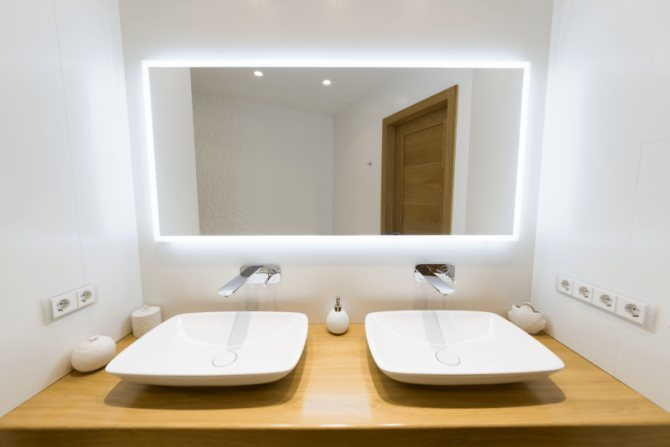

Details about how to properly wiring in the bathroom and why it is impossible to put machines more than 16 A on sockets is written here.
From the side of the switchboard, the socket line must be protected by an automatic RCD with a tripping current of no more than 30 mA (but it is better to use 10 mA devices), or a differential automatic device (16A with a tripping current of 30 or 10 mA). This is done not only to ensure adequate protection against equipment failure, but also to save human life in case of accidental hitting "under voltage".
In a private house, the implementation of all of the above is usually not difficult. In apartment buildings of the old construction, the "switchboard" in which consists of two or three automatic switches of dubious reliability, located in the storey electrical panel, connecting a separate line is another task.
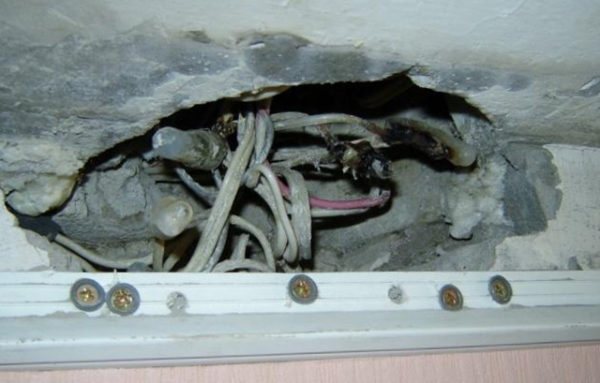

Typical condition of hidden wiring in old houses.
The first thing that is prevented by the uncertainty of the laying paths is drilling a through hole from the side of the staircase to the apartment (or vice versa). "Guessing" the place of passage of wires and getting into them during work leads, at best, to a complete de-energization of your own, and sometimes even a couple of neighboring apartments.
Theoretically, the problem of determining the location of the wires in the wall is easily solved using a special measuring device - a hidden wiring finder.In practice, the use of such a device is greatly complicated by its cost - the price of a good professional seeker is comparable (and often even higher!
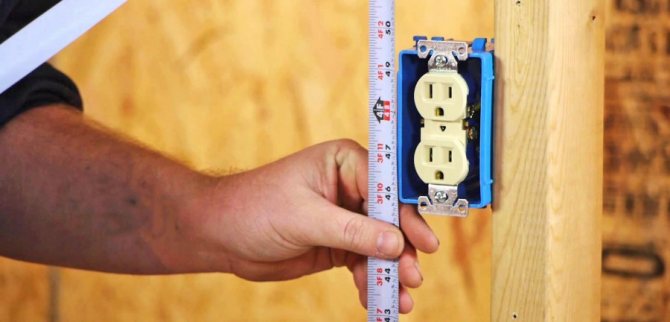

Nevertheless, with even minimal skills in electrical work, straight arms and the ability to think logically, the task is quite solvable. However, the supply of grounding for the outlet into which the washing machine will be connected, especially if the floor is higher than the second, is a real, often unsolvable problem in principle.
The choice of the location of the outlet for the washing machine installed in the bathroom often becomes a real problem for a very simple reason: the entire space in the bathroom is divided into several zones, differing from each other in the degree of electrical safety.
- Zero zone - the inner "territory" of the bath or shower tray. It is FORBIDDEN to place sockets with an operating voltage of 220 volts in it, and categorically, not only by the relevant building codes, but also by elementary common sense.
- This is followed by the first zone - its boundaries are outlined by the outer contours of the bath or shower (pallet). It is possible to install only water heaters in it, the cases of which have a very high level of moisture protection, it is FORBIDDEN to install 220 V sockets in it, even if they are necessary for the operation of the same water heaters.
- After the first comes the second zone - its outer boundaries are 60 cm from the boundaries of the previous, first zone. It is already possible to mount sockets in zone 2, but with a prerequisite - the degree of their moisture resistance must be at least 4 according to the IP gradation (widespread "budget" sockets with a cover covering the plug socket are semi-hermetic and in this case cannot be used ).
- after the outer boundaries of the second zone, all restrictions on the installation of outlets (and electrical equipment in general) are removed - the "point" for connecting the washing machine can be mounted in any convenient place.
It should be borne in mind that for the sake of safety, it is better to refer the washbasin bowl to the "territories" of the zero and first zones. Especially if the faucet mounted on it belongs to "high" and the water pressure is strong.
Guided by the above, it is easy to calculate that a regular (and not sealed) outlet for a washing machine in the bathroom should be at least 120 cm from the outer edge of the side of the bathtub or pallet: 60 cm to the borders of the second zone 60 cm of the standard width of the washing machine. And if in multi-storey new buildings and individual cottage houses, these dimensions are usually easy to comply with, then in miniature bathrooms "Khrushchev" and old "panel" quite often there is a situation in which the socket for a washing machine in the bathroom simply CANNOT be mounted, no matter how much you want !
We offer you to familiarize yourself with the Budget bathroom design (58 photos): options for the economy design of the bathroom. Registration rules
In this case, there are only two ways out:
- Give up the bright idea of installing a washing machine in the bathroom and installing it in a different room.
- Install the socket on the outside of the bathroom wall.
In every house, there are many household appliances powered by the electrical network. These devices greatly simplify everyday life and everyday life of a person. But the presence of electrical wiring in a residential building without proper maintenance often becomes the cause of domestic injuries. Since the washing machine is a powerful appliance, be sure to carefully check the wiring when connecting it.
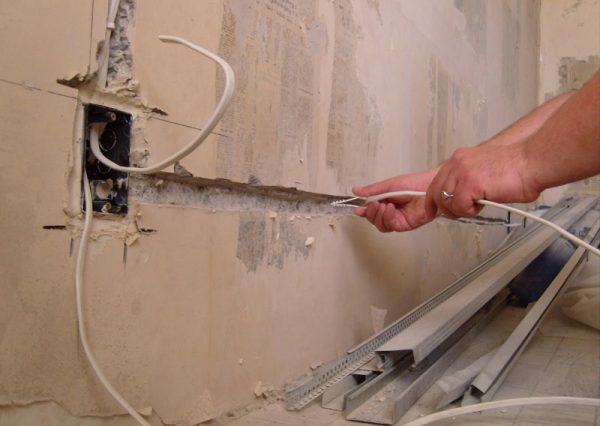

Wiring
It must meet the following requirements:
- The wiring for the washing machine must be a three-core copper cable. In older buildings, aluminum wires were often laid, which are not suitable for such powerful equipment.
- To safely install a socket for a powerful household appliance, you need to lead a separate cable from the shield.If you power the washing machine into a block of outlets that connect to 1 cable, a short circuit or damage to the appliance may occur.
- In rooms with high humidity, only closed wiring is allowed. This means that the cable from the switchboard is passed in a groove inside the walls without reaching the surface. This measure protects the wiring from contact with water, which is an excellent conductor of electricity.
- The cable is connected to the switchboard through an emergency shutdown device, which protects the devices from short circuits and injuries.
A big mistake often made by uninformed homeowners is plugging the washing machine into a regular outlet. Since there is high humidity in this room, and direct contact with water is not excluded, only specially designed moisture-proof equipment is installed in it.
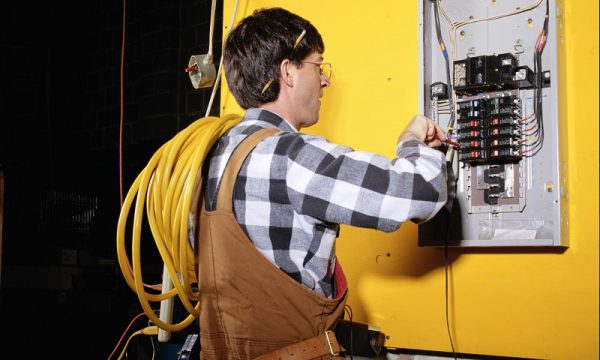

Connecting wires in the dashboard
So that equipment and people do not suffer from splashes, sockets are used in the bathroom that meet the following requirements:
- Waterproof sockets are equipped with special covers that protect the product from moisture penetration.

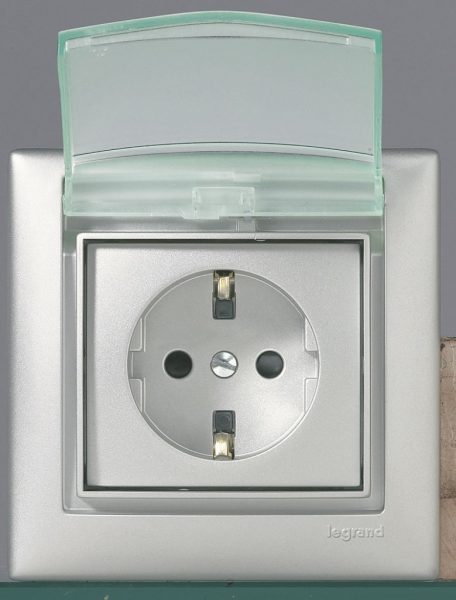
Waterproof sockets - The inside of the waterproof outlets is insulated with tight rubber rings, which minimize the risk of sparks between contacts or short circuits.
- Experienced bathroom fitters recommend using sockets with the maximum level of protection against moisture, which are marked with IPX4, they are not afraid of splashes or even a direct stream of water. IPX1 class models only protect against small splashes.
Choice of sockets for the bathroom
Choosing the right waterproof outlets for your bathroom is a snap. Despite the large number of design solutions, from a technical point of view, these products cannot be classified as diverse. When classifying them, only two main features are used - the power and the number of consumers connected at the same time.
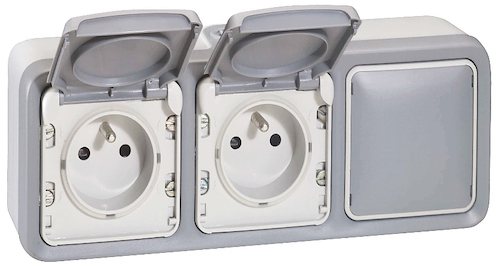

The quantitative indicator, as a rule, does not raise any special questions. When choosing outlets, the main focus is on the power indicator. For example, washing machines and other powerful equipment are connected to sockets with a rating of 16 A. Appliances with lower parameters may melt due to overload and cause a short circuit. Low-power sockets, including those with a cover, are used to connect hair dryers, electric shavers and other similar devices, for which a rating of 8 A is quite enough.
The main difference between products intended for bathrooms is their protection from moisture and the presence of a spring-loaded cover that protects against direct ingress of water. All distinguishing features are indicated in the markings on the case, including the two-digit IP symbols.
The digital designation characterizes the ability to counteract various types of external intrusions. The first number corresponds to the dust protection class, and the second to moisture. The degree of moisture resistance is indicated by numbers from 0 to 8. The lowest class is considered to be class zero, and the highest is class 8, at which the product can be operated being completely immersed in water to a depth of more than 1 m. In bathrooms, it is recommended to use sockets with protection class 4 and above, providing protection against dripping and splashing in all directions.
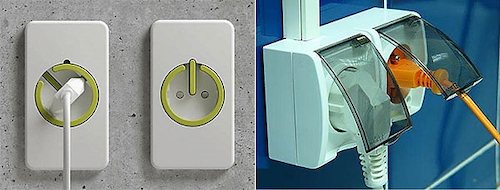

Installation of sockets with a lower degree of protection is also allowed. However, such products cannot be mounted open. They must be installed in a special protective casing with the required tightness. In addition, any outlet intended for the bathroom must be equipped with a grounding contact.
Calculation of cable cross-section
In order for the electrical wiring to withstand the load from a powerful washing machine, it is necessary to correctly calculate the cross-section of the cable that extends from the switchboard to the outlet. As you know, to connect high-performance household equipment, only a three-core copper cable is used, one of the wires of which is connected to ground.
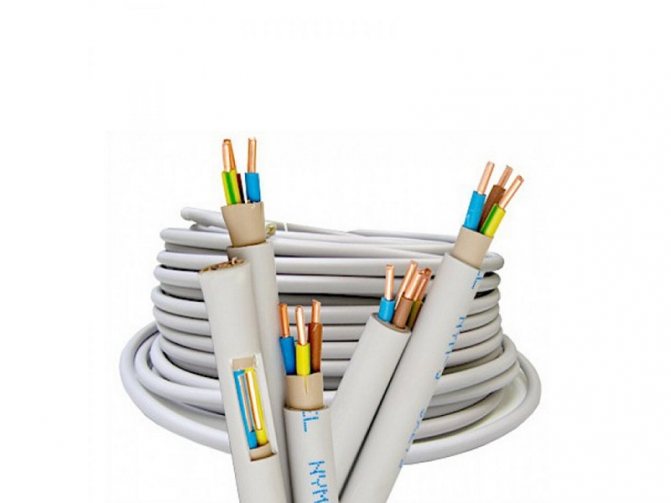

Three-core cable
The cable cross-section is determined as follows:
- If a separate outlet is equipped for the washing machine in accordance with the recommendations of experienced craftsmen, then first you need to find out its power. In accordance with the power, which usually does not exceed 3 kW, the cable cross-section is selected according to the reference tables.
- If a block of outlets is connected to one cable at once, then you need to calculate the total power of devices that will work at the same time. Based on the total power according to the reference tables, select the cable cross-section.
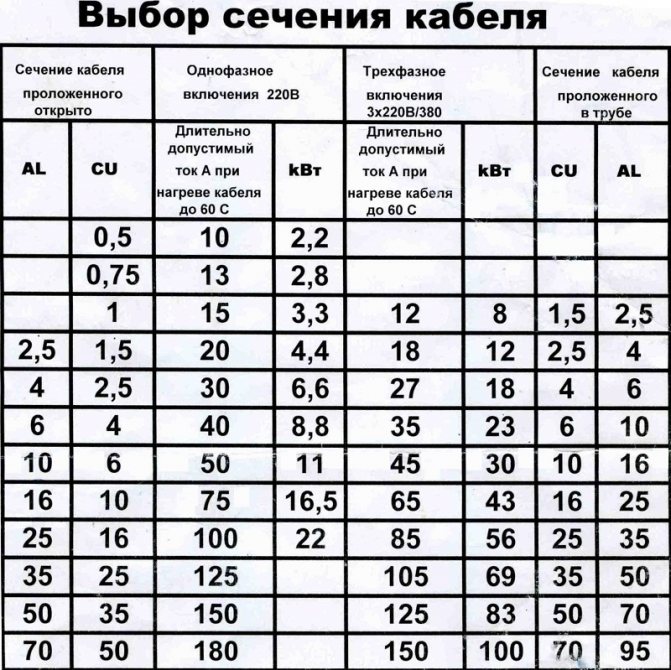

Cable cross-section selection table
When laying the wiring for connecting a washing machine or other powerful household equipment, use a three-core copper cable with a cross section of 2.5 mm if the power of the equipment does not exceed 0 kW.
Line installation in the bathroom
Wet walls and floors in rooms with high humidity create an environment that conducts electricity well. Therefore, the laying of wires in the bathroom should be done according to certain rules:
- The wires are laid in a hidden way, under the finish in a corrugated pipe.
- Indoors, it is prohibited to install junction boxes, various twists and connections. The wires are laid in one piece and pulled from the outside of the box.
- Determining how many sockets are needed - most often, no more than 2-3 pieces.
- There must be a separate socket in the bathroom for the washing machine and water heater. Installation of the switch is carried out outside the room.
- Each group of devices or dedicated line is equipped with a circuit breaker.
- The wiring lines should be drawn strictly vertically and horizontally, at what height is required in specific places. The wires themselves must be with copper conductors with a cross section of at least 2.5 mm2, enclosed in triple insulation. Used wires with a large number of bends or with damaged insulation are not allowed for use.
It is recommended to replace the old wiring, installed a very long time ago and never changed. This will allow during operation to avoid such malfunctions as overheating, short circuits, sparking, fire, accompanied by constant tripping of the circuit breaker. Often you have to solve the problem of how to move the outlet.
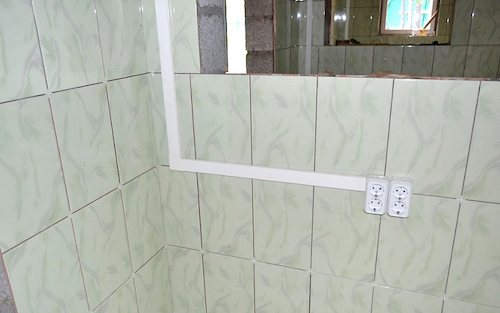

After marking the lines, wires and cables are laid in their places. The gasket can be made in the voids between the wall and the decorative covering using corrugated sleeves. In the second version, the wires are laid directly in the walls, for which strobes are made in advance according to the marking. After laying, the wires are fixed with staples, and then the strobes are covered with a solution of stucco.
Further, in the places where the sockets are installed, socket boxes are mounted, fixed with alabaster. They lead wires with three cores, of which two are phase and zero, and one is ground.
How the installation is carried out
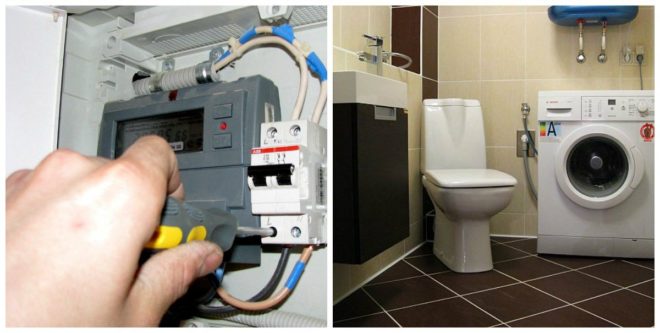

Except for the need to use waterproof devices, the installation of such an outlet in the bathroom is no different from the standard installation procedure. If closed electrical wiring is used, then it is necessary to calculate in advance in what place and how to make the sockets. At these points, holes are drilled for socket boxes and grooves are cut into the wall to them, where the wiring will fit.
Since the bathroom is always tiled, the wires are placed in the resulting hole and its location is carefully measured.When the tile is laid, a hole is drilled in it from which the wire is removed and an outlet is installed in this place.
If the finishing work has already been completed, but it is necessary to add another outlet in the bathroom, then an open type of electrical wiring is used, which is laid in a plastic corrugated pipe or cable channel. The sockets themselves are screwed with dowels, for fixing which holes are pre-drilled in the tile.
Ensuring safe operation
One of the elements of electrical safety is a protective grounding device - RCD. Previously, when two-wire wiring was used, a separate heavy-gauge cable was led from the bathroom to the switchboard and connected to the ground bus. Thus, the question of how to make grounding was solved. In modern wires, three cores are initially provided, one of which performs the function of grounding. It must be connected to the grounding pin of the waterproof outlet, and then also goes to the distribution board.
Additional electrical safety is provided by a residual current device. These devices are mandatory for use in electrical wiring lines to bathrooms. The RCD is located in the home electrical panel and cuts off the power in case of current leaks.
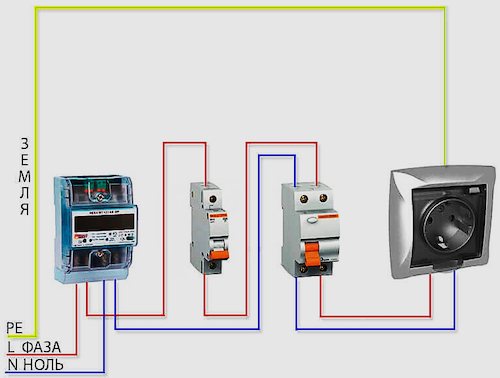

A separate RCD with a rating exceeding the rated current of the circuit breaker is installed on the sockets in the bathroom. If this condition is not met, then the circuit with the protective device will simply not function normally.
Simultaneously with the RCD, automatic switches are installed to protect the line from overloads and short circuits. They protect individual power outlets or groups of outlets. The rating of the protective equipment is selected in accordance with the expected load.
Protection: grounding, RCD and isolation transformer
The requirements of the PUE clearly indicate the need to use protective devices for outlets in the bathroom. Grounding and RCD are mandatory, the recommended one is an isolation transformer.
The grounding conductor must be connected not only to outlets in the bathroom, but also to any other in the apartment or house. This is a guaranteed protection that protects a person from the effects of the phase on the body, which may appear on the metal parts of the cases of electrical appliances.
A circuit breaker cuts off the power supply in the event of a dangerous overload in the network.
The residual current device is triggered if a leakage current occurs, which occurs when a phase is shorted to the device case, connected to a socket with an earthing contact. There are ways to connect an RCD without grounding, but this protective device works most effectively if the leakage current has somewhere to go. With the correct connection and selection of the protective device, the maximum trip current of the RCD is 30 mA.
The last of the listed devices, despite its usefulness, is practically not used, since it requires rather large investments both for the purchase of a transformer and for its installation. In fact, this is a standard transformer, but it does not increase or decrease the voltage, but leaves it unchanged. Its protective functions lie in the fact that the line that it feeds is not directly connected to the common circuit, and therefore there is no usual human connection with the earth in this case. As a result, a leakage current that may appear on the body of an electrical appliance when a phase breaks through it will not be dangerous for a person.
Additional safety measures in bathrooms
Additional electrical safety in the bathroom is provided by creating an equipotential bonding system in the bath.
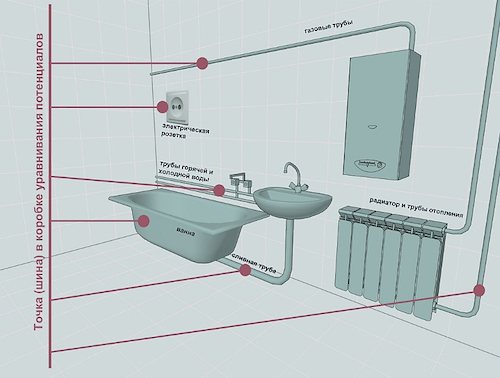

In this case, the electrical connection of the conductive parts is performed, consisting of:
- Main protective conductor (trunk).
- Main ground wire (trunk) or special grounding clamp.
- Utilities consisting of steel pipes inside and outside the building.
- Metal elements of building structures, lightning protection systems and other suitable networks.
In accordance with the Rules for the Installation of Electrical Installations, all stationary equipment and other conductive parts are connected to the potential equalization system, as well as zero protective conductors with which open contact and touching open places are possible. The same list also includes a wall outlet for the bathroom.
This system must be installed in rooms with high humidity, even in the absence of any electrical equipment. All components are connected to a common wire, which in turn is connected to the PE bus, which is located at the input or in the switchboard.
Wiring requirements and number of outlets
The most powerful electrical appliances for which a power outlet is being installed in the bathroom are a boiler, a washing machine and a hairdryer. They consume about 1.5-3 kilowatts each, depending on the model. Additionally, devices such as a curling iron, an electric shaver and the like, which do not differ in high power, but require a separate connection, can be used here.
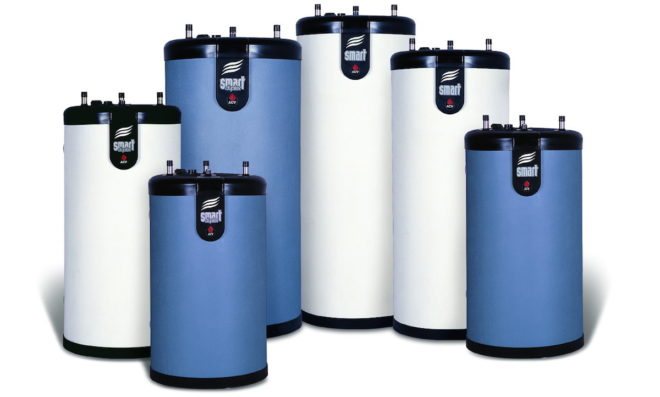

If the boiler is not directly connected to the network (some of them can only be powered in this way), then in any case separate outlets are needed for it and the washing machine - it is best if the wires to them are routed to each separately from the input panel (especially since junction boxes should not be installed in rooms with high humidity). Also, an outlet is needed near the washbasin - it is unlikely that several devices will be connected to it at once, but it is better if it is double.
As a result, no rules and regulations are imposed on the number of outlets - it is selected depending on how many devices are planned to be turned on.
The cross-section of wires that will be laid in the bathroom is taken at the rate of 2.5 mm² for sockets and 1.5 mm² for lighting - this should be sufficient with the above device power. Otherwise, the cross-section of the wires must be selected individually.
PUE strongly recommend to lay the wiring in a closed way - inside the wall. If, for some reason, you need to lay wires along the surface of the wall, then firstly you need to use a cable with the appropriate insulation class, and secondly, lay it in a polyethylene corrugated pipe. The metal can not be used, as in the event of a short circuit, it can lead to electric shock to a person.
Where to mount the socket?
The location of electrical appliances in the bathroom must be carried out in accordance with certain instructions, which should not be violated, otherwise you will be endangered. The socket is installed as follows:
- the room is divided into zones, which is indicated in the diagram
- the height from the floor should be equal to 60 cm
- location from the closest water source - no less 60 cm
Pure water without various impurities is not a very good conductor of electricity. But the water that is in the water supply contains all kinds of salts, chemicals, chlorine, which changes the characteristics of the water and increases the conductivity of the current. Therefore, direct contact of water with electricity should never be allowed.
To find out in which places you need to install sockets from the floor, you need to take into account the following nuances in the calculation:
- plumbing installation
- the presence of a partition between the bathing area and other areas
- places of installation of the washing machine and various electrical appliances
The bathroom is divided into four zones - 0, 1, 2, 3.Zero-zone items are those that create a lot of splashing. Here you can mount devices up to 12 watts. In the first zone, you can mount objects that heat water. Boilers, lamps, ventilation can be safely placed in the second zone. And, finally, in the third zone, sockets are installed at a height 60 cm from the floor, observing all safety rules.
There is no exact height from the floor at which the sockets are installed. Some professionals are of the opinion - the higher, the safer, therefore they advise to install the outlet at a height 180 cm from the floor. But if the length of the wire of the electrical device that is used is not too long, then it may not be enough to reach the outlet. The optimal height of the socket from the floor is 60 cm... If the bathroom is suddenly flooded, the water will not reach the outlet.
Installation
Installation of sockets in the bathroom from scratch should be done based on the recommendations:
- before installation, the line is equipped with a separate automatic switch for emergency shutdown;
- each socket has a separate connection with a separate wire;
- the socket is completed with an earthing cable and is equipped with a cover;
- the device should be located at least 60 cm from water sources;
- installation is carried out without repair, therefore the socket must be equipped with a separate cable, which is connected to the switchboard through the machine.
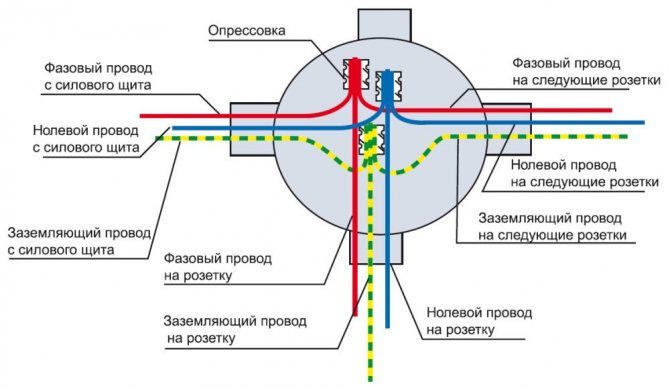

Installation requires the following tools:
- indicator for measuring voltage;
- Phillips screwdriver;
- a knife or special tool to remove insulation;
- level;
- drill;
- pliers.
Then the editing process begins. It is conventionally divided into 4 main stages:
- Drilling holes into which the dowels are installed. They are needed to secure the device.
- Then the wiring is prepared. The tips are cleaned of the insulating layer with a knife or a special cleaning tool.
- After that, the bolts are installed in the prepared holes. Then they connect it to the outlet and attach it to the box to the wall with dowels. Moisture resistant devices are equipped with pre-made holes, which are equipped with rubber plugs. It is in them that the wiring is connected before connecting to the mains.
- The final step will be to install the case in the designated place and supply electricity.
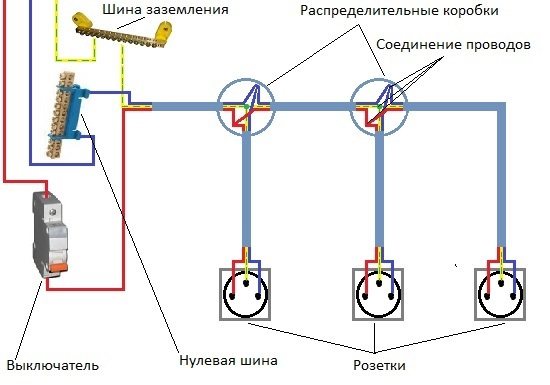

If a built-in socket is to be installed, then at the first stage you need to make a hole in the wall along the diameter of the box. After that, it must be installed on the plasterboard wall using special screws and the wires must be connected.
Installation of an additional socket is carried out according to a similar algorithm, but with a slight difference. There are 2 ways of cable routing:
- conducting a new line of electrical cable from the shield, installing a separate circuit breaker;
- installation of a transformer, in this case, grounding is carried out from the nearest electric point.
The rest of the steps are the same as for the initial installation. When installing additional equipment, it is necessary to make additional holes in the veneer; for this purpose, specially designed drills and crowns are used.
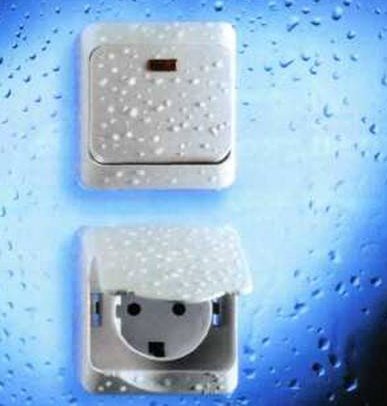

Follow the safety precautions during installation:
- installation is carried out in a de-energized apartment;
- check wires with an indicator before connecting;
- contact with bare wires must not be allowed.
If you follow the simple installation rules, you can independently connect the outlet in the bathroom without much effort.
Outlets in bathrooms can and should be installed.
The choice of the outlet is made taking into account the devices connected to it and their total power. For small household appliances: a curling iron, a razor, you can use sockets for 8 A. For powerful devices, such as a washing machine and water heaters, you will need sockets for 16 A. connect the device.

